INTERVIEW: Simone Lyles
This Thursday evening at 6:30 p.m., our Black History Month 2020 programming kicks off at the Oriental Theatre with our special Black Women, Both Sides of the Lens shorts program! One of the jewels of this program is Origin, a story of a young woman in 1982 Oakland, grappling with her feelings for best friend. Undergoing conversion therapy to repress these feelings; nevertheless, they persist. Director/writer Simone Lyles was kind enough to take time out to chat with Milwaukee Film ahead of Thursday's screening about her career, Origin, and the importance of telling this story! Read this interview, and then be sure to buy tickets for this special one night only short film presentation!
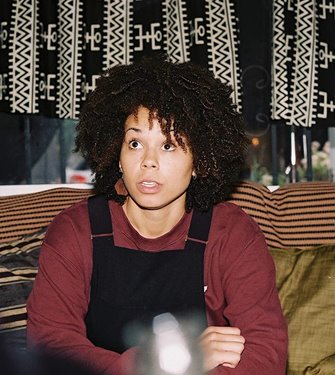
Could you talk a little about how you got your start as a filmmaker?
I was introduced to photography first actually. Prior to filmmaking, I was a collegiate basketball player for the University of California Berkeley and it was there that I got introduced to photography, film and editing. I was fortunate enough to have a few people around me during my college experience that let me experiment with the camera, really learn the basics and exposed me to what it was like to create still and moving images. After college I took a year off to explore what type of filmmaking I wanted to do. I started off freelancing, creating a lot for other collegiate basketball teams and then eventually realized that I wanted to transition to narrative work. I decided then that I would apply to film school and try to drench myself in everything that I could learn about operating a camera, directing, working with actors etc. I got into the UCLA film program in 2016 and from there I just hit the ground running with film.
Could you talk a little about the significance of setting the film in 1982? How big of a challenge was it to nail the aesthetics of that era on a short film budget?
When I was writing the film I knew that I wanted it to be set in the 80s because there is something about that era that has always drawn me, but moreso as I was writing this film about a Black woman and her sexuality, I wanted the time period to in some ways reflect and inform that journey. In the 80s in Oakland, CA someone like Kora would have been adjacent to the Black Panther Party (which ended in 1982) & the AIDS crisis that was evolving in SF. I wanted Kora's external world to in someways give nuance and insight into the internal identity that she was grappling with — being a lesbian Black woman, and what that meant during the 80s in Oakland. I wanted there to be intersection because at the end of the day Kora isn't just a lesbian, or isn't just Black, she is both and as she looks at her identity through those intersections I wanted the time period around her to also be intersectional. I wanted what was happening around her to contribute to her identity and give context to the audience that was watching. The question of, "what would it be like to work through your sexuality during this time period."
The other part about the time period that I wanted to make sure that I got right and helped inform the accuracy of the story, was the placement of the self-help conversion therapy tapes. As I was researching I came across this organization, "Love in Action" which was based out of Marin County in 1973 (I also name the tapes in the film after this organization). Though the film takes place 10 years later from when this org was founded, I wanted the conversion therapy reality to not be new to someone like Kora, but something that she knew existed and could revert to in a time of complete desperation.
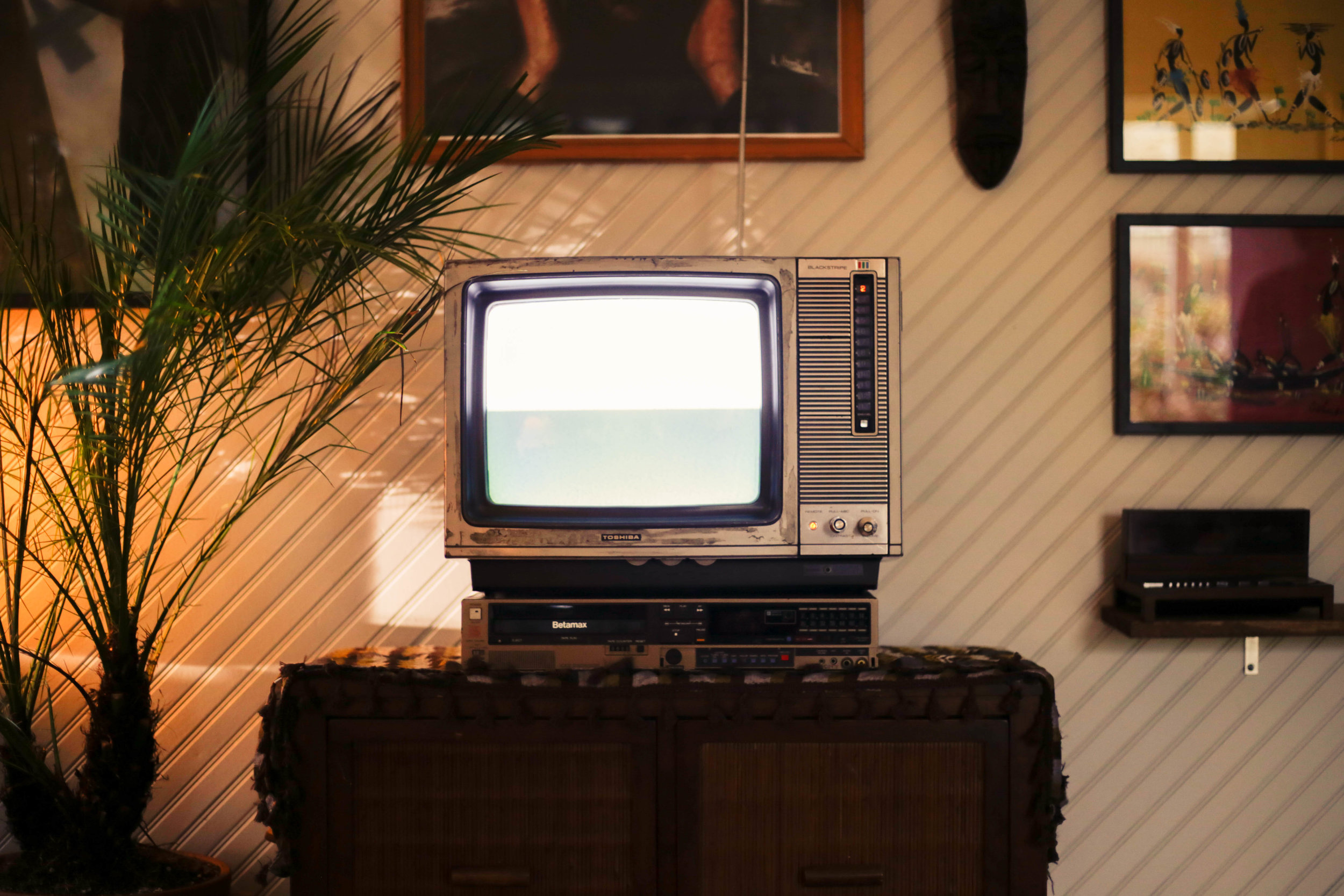
An example of the film's 1980's decor and production design.
As for nailing the aesthetics, I give 100% credit to my art department, costume department and DP for being so intentional and detailed about everything. They all wanted to get the time period right as much as they could with the budget we had. It took a lot of research, a lot of experimentation and picking the right locations where we could create the accuracy. It also took a lot of adaptability and hustle. I remember my Production Designer telling me stories of how many different stores she had to go to, to try and find the right decor, and when she had to improvise and create things herself. I think the budget of short film's really make period pieces feel nearly impossible, but I think I got particularly lucky in that everyone I had around me was so talented, and intentional and they all really made the era come to life.
To that point, something I'm really proud of is when the film showed in last year's Frameline Film Festival, we had a handful of people that came up to us after and congratulated us on how well we did with the time period and we had people come up to us and tell us that they felt like their personal story was reflected in the film because that is what the early 80s felt like for them. So to put in that much research beforehand and execute with the resources and the money we had, it felt really validating to hear from viewers that the story resonated, and the world we created felt authentic.
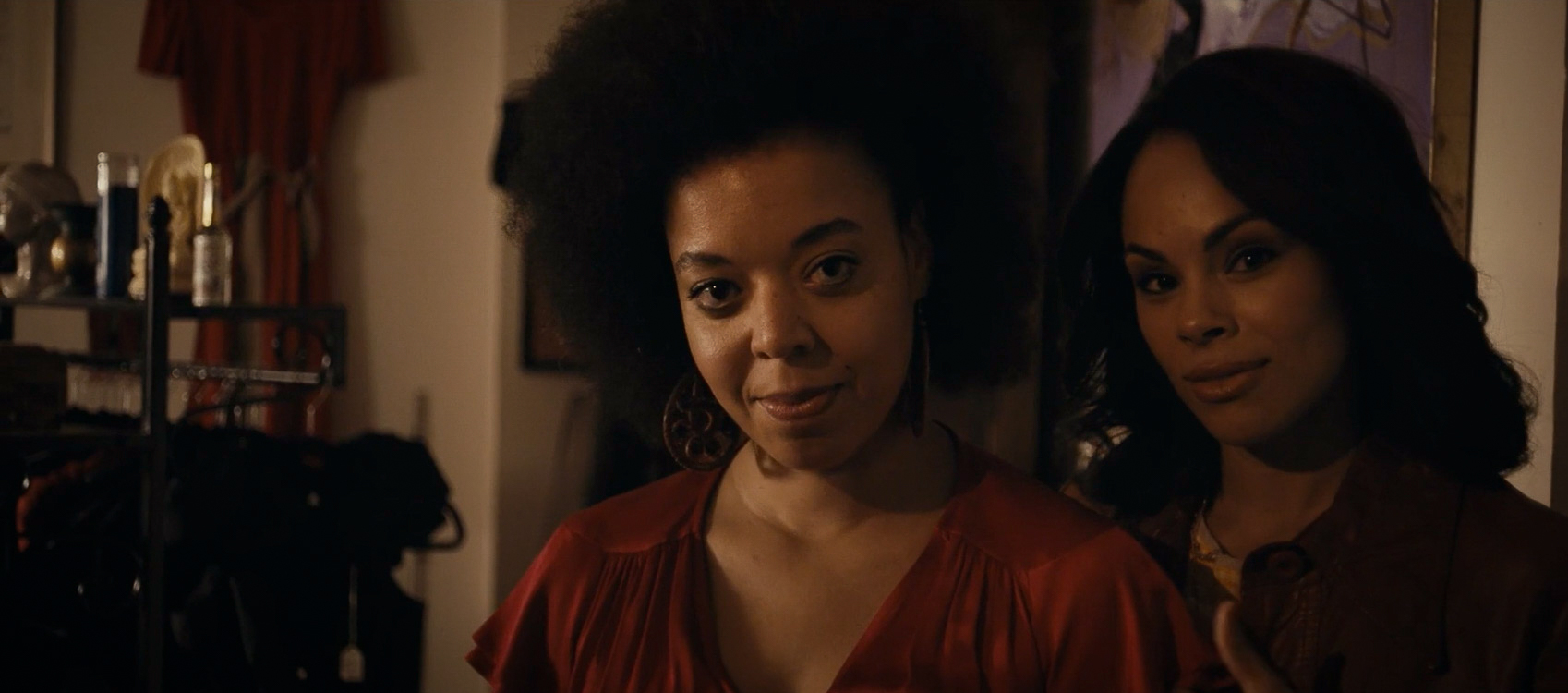
Lead actors Christina Childress ("Kora") and Maxine Goynes ("Gina") in Origin
A film like this is reliant on the chemistry between its two leads, Kora and Gina - did you create this with the performers (Christina and Maxine) in mind or did you have an audition process? Did you do a lot of work beforehand to make sure the relationship felt lived in once you put it in front of the camera?
The chemistry for this film was everything to me and my main goal was to find two women that when they worked together, felt like there was already built in history. When I cast Christina & Maxine, they hadn't done a chemistry read yet, but I just had this gut feeling having spent time with each of them individually that it was all going to work out because they were exceptional performers. That being said though, we also did a lot of rehearsing beforehand to build their relationship. Our rehearsals were part working through scenes and part allowing the characters to get to know each other, offering them a space to explore each other unfiltered, and also allowing them to explore a friend-like intimacy. We built out their histories, where were they from, what was their family like, what was their childhood like — really trying to create paths for them to tap back into.
In addition, when we were on location our production crew got them an AirBnb that the two of them just stayed in together. So leading up to our shoot days and after every shoot day they would have their own time to spend with each other that wasn't directed by me, and I think this gave them a freedom to build their character relationship even more.
Could you talk about camera movement? You’re able to convey a lot of their friendship’s dynamic just in the way your camera is moving during their conversations. Is that something you plan ahead of time with storyboarding or do you discover it on the day?
Camera movement was definitely something my DP and I talked about beforehand. We wanted to use the camera to help us build up the emotion and the tension that existed between Kora and Gina. So we were intentional about deciding the movement of the shots before we did them.
Because Kora had this secret that the audience knew but Gina didn't, the camera movement was intended to help us articulate that imbalance, and it also helped us show the intimacy of their friendship and the love that Kora felt for Gina. My DP & I felt like the more the camera moved in intentional ways, the more their relationship would reveal. It's also a testament to the actresses as well to really lean in to the movement we wanted to do and evolve with it. What they were able to do with it, I think also speaks to the way that it contributed to their dynamic.
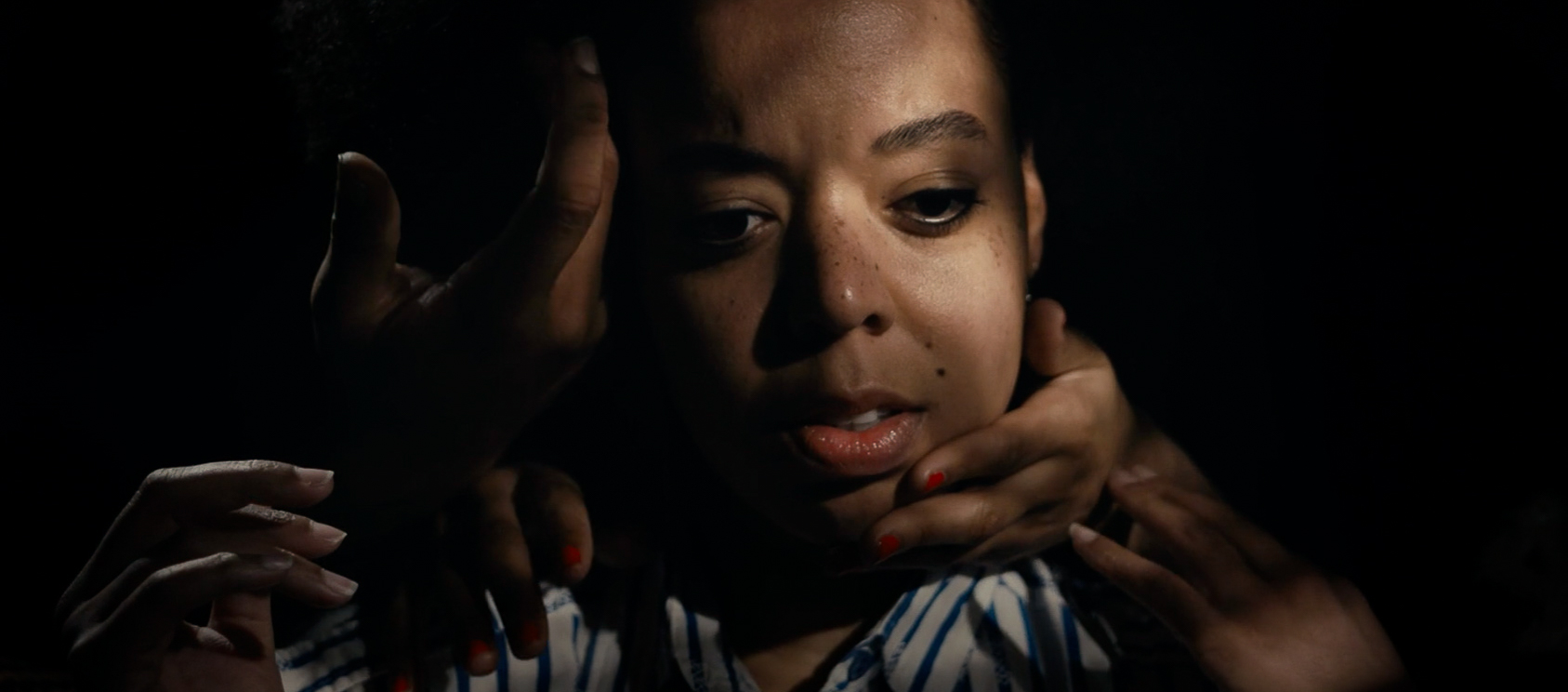
Kora during one of Origin's impressionistic fantasy sequences.
A key part of your film is the way in which Kora’s desires manifest themselves during fantasy sequences where she’s trying to stave off these desires she hasn’t yet embraced. Can you talk a little about the process of creating these impressionistic sequences and how you make sure they blend with the film as a whole?
I realized in film school that the avenue I wanted to explore as a Director was identity, but particularly how reality and fantasy blend to articulate our identities. So much of this film is about Kora's personal journey and the desires she is grappling with, I wanted to find a way for the audience to be in her head. As someone who discovered my sexuality during adulthood, I can look back at my journey and remember all the times that I relied on fantasizing as a way to comfort my reality. I wanted Kora to feel like where she may not have been ready to articulate herself in reality, she had already articulated who she was in her fantasies, and part of her journey was going to be in how she brought those two things together.
I also operate with this intention that I really just want Black women to have the opportunity to be multi-dimensional characters who are allowed the space to fantasize on screen and so I wanted to create a space for that. As for how to pull the impressionistic sequences in with the rest of the film, a lot of that came down to transitions. My DP and I worked a lot on how to seamlessly pull the audience in and out of Kora's head in ways that didn't feel abrupt and made sense. Having the act of watching the tapes really helped with these transitions because her task during those videos was to "recreate her future." It gave us this perfect gateway into her mind. The challenge was then making sure that the moment we stepped into her mind, could we also step out and make sure the story flowed the way it should. The other challenge was making sure that we visualized each of her fantasies differently, even though it all had to do with the same desires. We wanted to create vignettes that put us in her subconscious in ways that were abstract and impressionistic because I think the whole beauty of a fantasy is that it makes perfect sense to the host who is creating it, but for someone looking in, it feels like an interpretation.
The interior lives of women (especially Black women) are not something that cinema has often concerned itself with. How important is it for you to bring this nuanced and complex vision of your characters to the forefront through your filmmaking?
This intention is everything to me. It's the reason I wanted to become a filmmaker in the first place. I'm an observer at heart and naturally really introspective and I think about my identity a lot. I think the narrative, "I didn't see myself on screen" for any Black woman is ubiquitous and that's really what it boiled down to for me. I wanted to create stories where Black women's identities had nothing to do with stereotypes. That their identities were layered & intersectional. That they had space on camera to fantasize, but also just be in silence. I wanted these Black women characters to have freedom to explore, develop and discover. Allowing space for these nuances is what I am really passionate about in filmmaking.
.jpg.aspx?lang=en-US)
What have the screening experiences been like so far with this film? How exciting is it for you to have your work play on the big screen for an audience, especially in the case of our Black Women, Both Sides of the Lens showcase of short films about Black women, directed by Black women?
Its so exciting! The reception of the film to date has been overwhelming and I am really humbled by everyone that has enjoyed the film so far. My crew worked so hard, and we all had a really great time during the production process. Its been really awesome to here comments about how accurate we got the time period, or even that Kora's journey resonated so much with people. Its always nice as a filmmaker to get validation for the creative choices you made and the story you wanted to tell — when people can relate to your characters and see themselves in your story its such a huge point of validation.
To be a part of this program Black Women, Both Sides of the Lens is particularly special. I made this film for Black women and so to be selected to have the film screen during this program and during Black History Month is a real highlight for me.
What advice do you have for a filmmaker just starting out?
Tell specific stories — the more specific the story, the more ubiquitous it is, the more people will feel it, the more people it will resonate with. I would also say, just create — with whatever camera, and whatever story that comes to mind. The more you can get behind the camera to practice your craft, the better you will be.
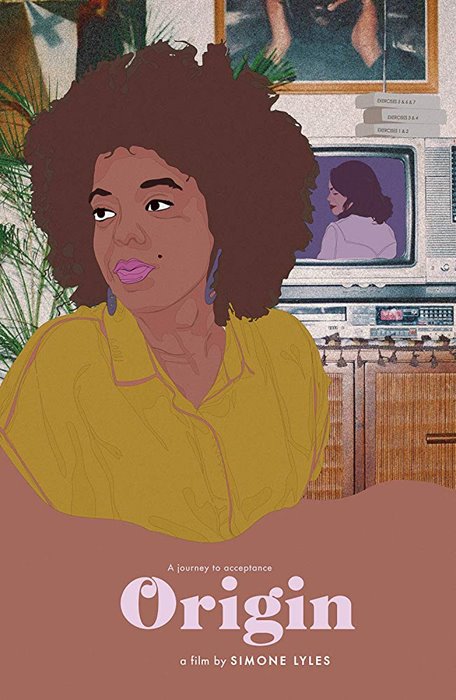
What’s next for Origin? What’s next for you?
I originally made Origin as a stand alone short film, but also a pilot concept. I would love if Origin turned into a series. That would be a dream. Though, what's next for me is, right now I am really drawn to the documentary space and wanting to tell stories about Black & Brown athletes, in non-traditional spaces & sports.


Posted by: Tom Fuchs